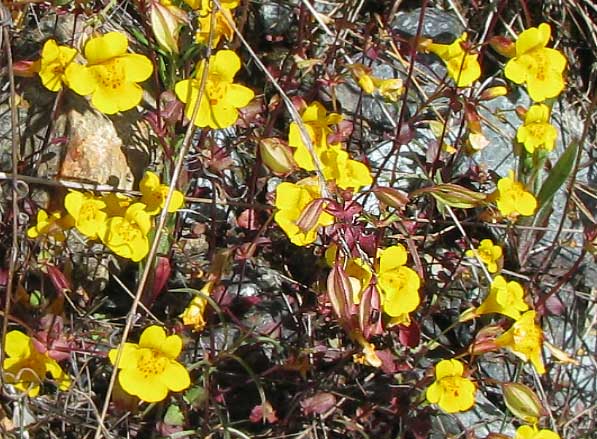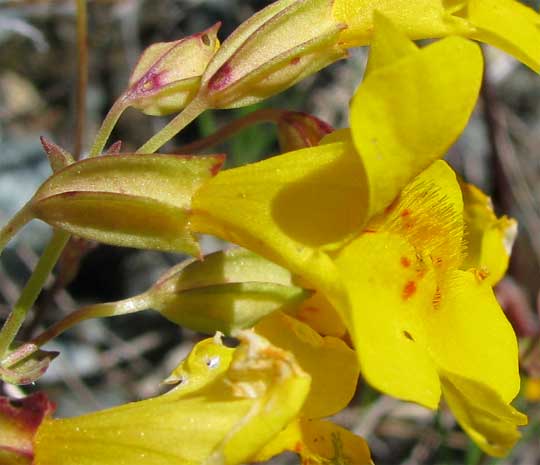Excerpts from Jim Conrad's
Naturalist Newsletter

from the the May 17, 2009 Newsletter, issued from the Siskiyou Mountains west of Grants Pass, Oregon:
SMALL-LEAF MONKEYFLOWERS
Like snapdragons, monkeyflower blossoms are bilaterally symmetrical and bugle-shaped. The Latin name Mimulus, applied to the genus by Linnaeus in 1753, derives from mimus, which means "buffoon," because of what Linnaeus considered the flowers' clownish bright colors, frequent spotting and irregular shapes.
In the very bottom of a shallow ditch along a road through the valley below us there's one spot about 20 feet long and two feet wide currently resplendently yellow with hundreds of slender, close-packed, yellow-blossomed monkeyflowers. You can see a small part at the top of this page.

Above there's a close-up of a single blossom, noteworthy features of which are: 1) how the floor of the flower's "throat" bulges upward forming a "palate" reducing entry into the corolla's interior; 2) the long, outward-pointing, soft hairs at the throat further restricting entry to small insects, and; 3) the five "pleats" or "wings" running longitudinally along the cylindrical calyx's sides.